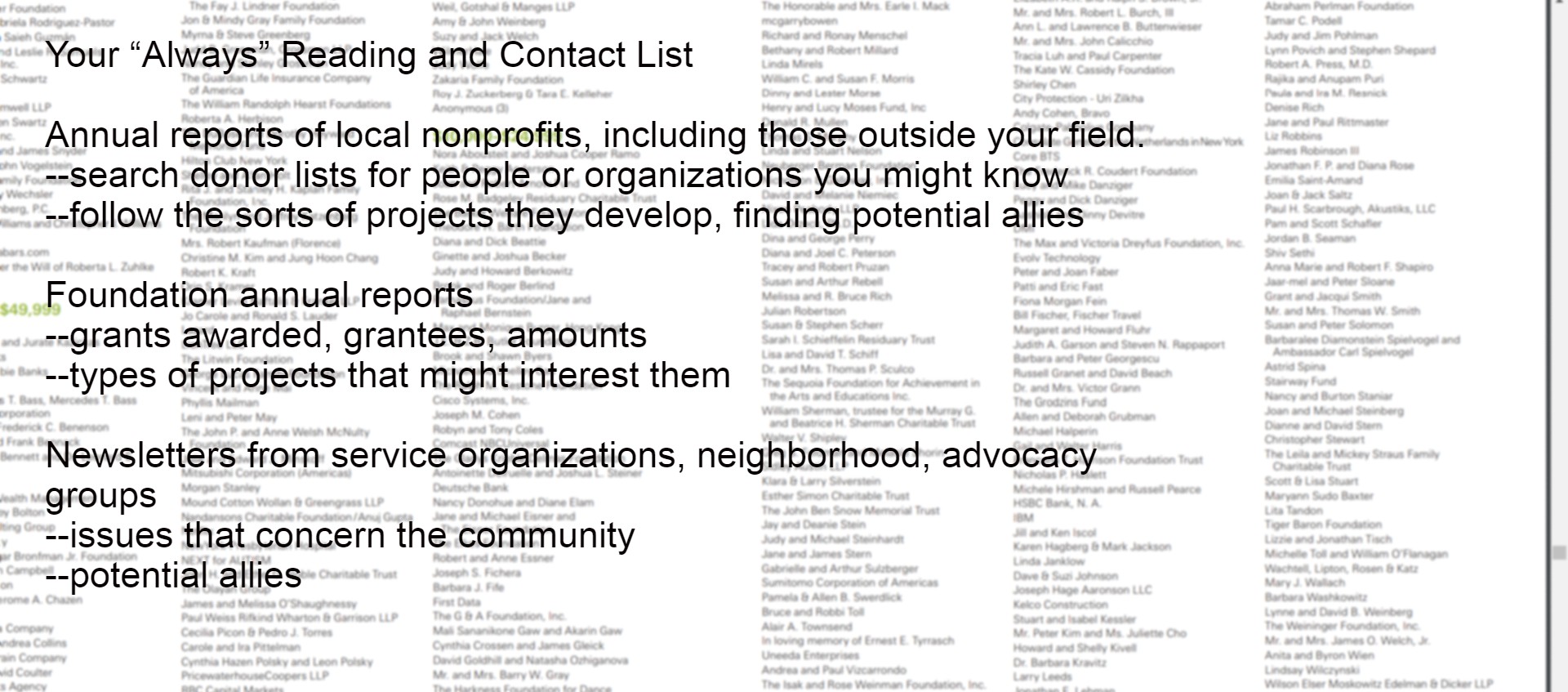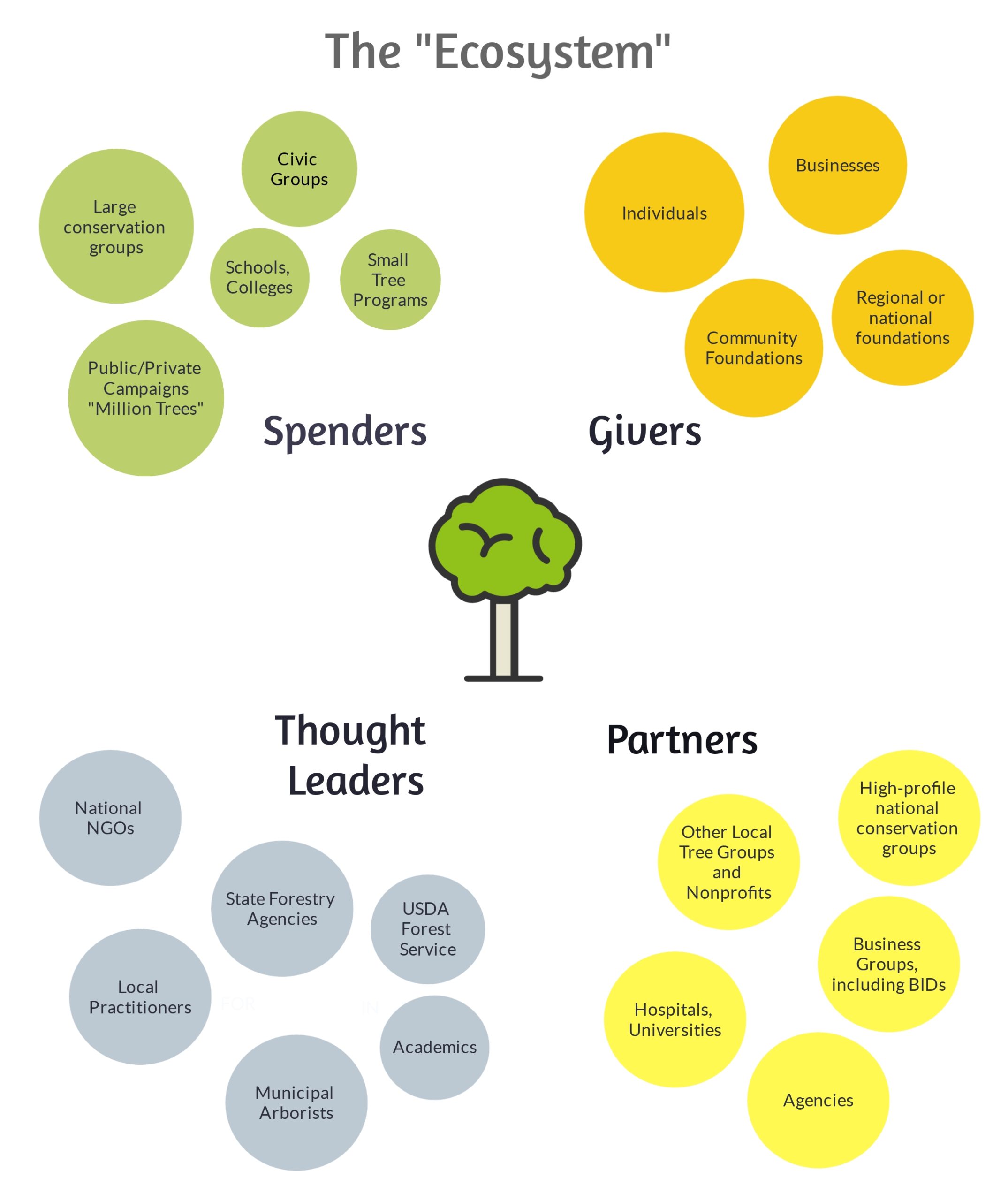Where do you fit?
Here’s what others are doing
Take inspiration from other projects, or learn from them and create your own.
Be present. Invisibility is not an option.
- Begin by learning which organizations in your community already have a stake in urban forestry. Your state urban forestry coordinator [housed in the forestry agency] can help direct you.
- If your community employs an urban forester or municipal arborist, get in touch. Often, they can direct you to local groups active in tree planting, or other urban forestry activities.
- Determine whether other organizations like yours are pursuing similar goals or funding similar programs. They can serve as “door openers,” even potential partners.
- Get in front of “thought” leaders; attend conferences [and network at receptions]; make presentations; set up a booth. Be there.
- Find local business leaders with interests in making their community a better place to work and shop. In many cities, they’ll be organized into self-funding business improvement districts.
- Explore local grantmakers, especially community foundations. Look at their websites and contact the program officer that “looks right” and set up a meeting. Most are willing to share their knowledge and experience.
What can you do with this information?
Find allies, partners, mentors, funders. Discover what’s on their minds. Learn what’s working, what’s not, and where your program might fit in.

It’s not just whom you know. It’s whether you can find someone who already knows.

What’s a “major” donor?
Depends on your organization, your mission and your vision. For a small tree-planting non-profit, a major donor might contribute $1,000 annually. But don’t necessarily “think small.” A local, land conservation and education nonprofit in Metro DC has mastered the Five “Rs” and earns many five-figure grants from individuals annually.











